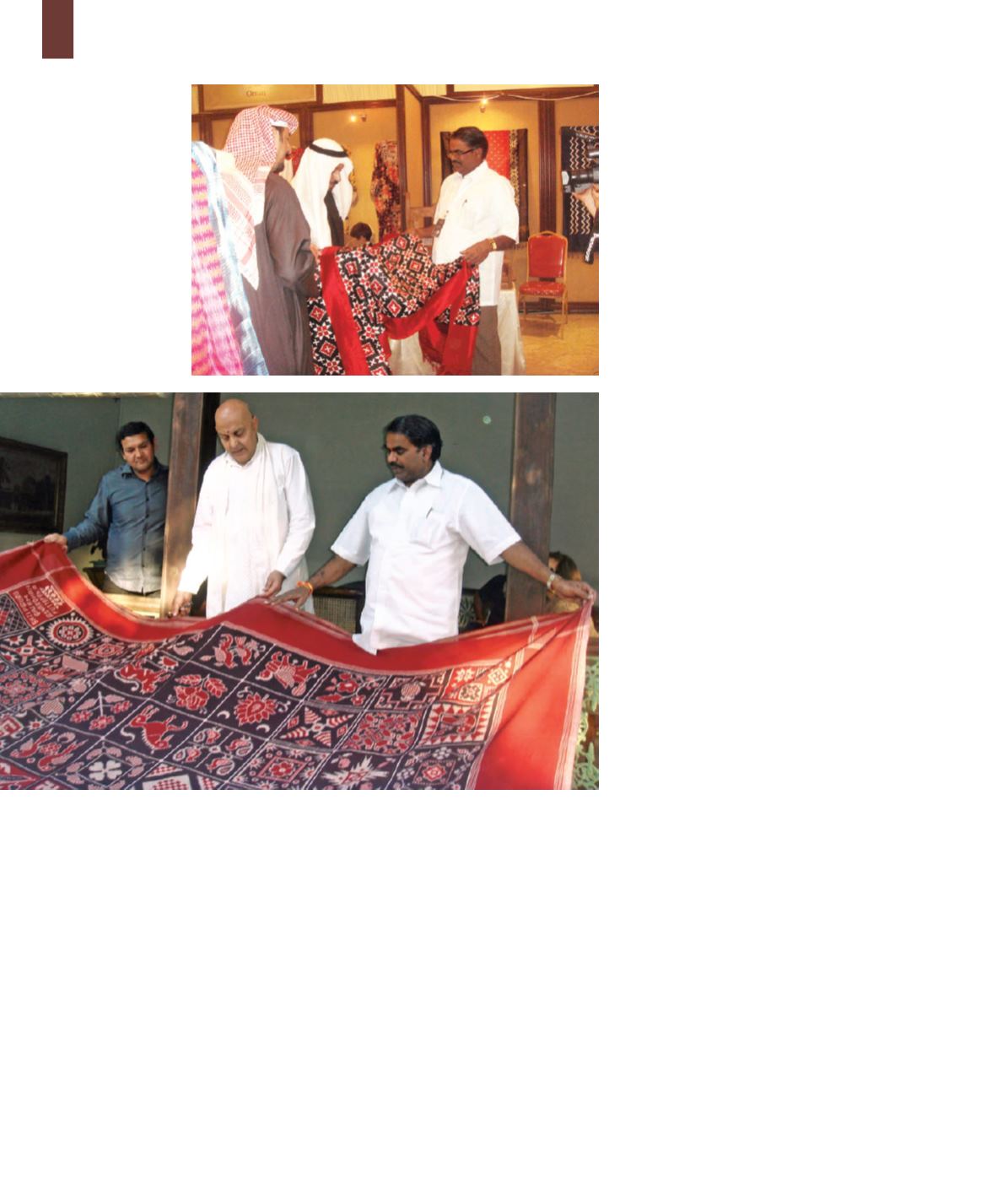
64
Soon afterwards I was transferred to Weavers
Service Centre, Hyderabad, which was
established as a small sub-centre to Weavers
Service Centre, Vijayawada, to develop the
handloom clusters of Telangana area. My
family and I concentrated our efforts in
developing new patterns in Pochampalli
weaves and Telia Rumals. When Shrimati Pupul
Jayakar visited us in 1983 she was astonished
by the Telia Rumals we were weaving and
recommended my name for a National Award.
Through her, Shri Gautam Vaghela and Shri
Martand Singh’s encouragement, Telia Rumals
woven by my family and me were exhibited in
New Delhi and at the Festival of India held
in London, France, New York, Denmark and
many other festivals and exhibitions. This
brought the textile national and international
limelight, helped improve our skills and
brought us orders from many government
marketing organisations, which was a great
support to the craft and our family. This made
all the difference to us as our family had seen
immense hardship.
Awards and Recognition
In recognition of my contribution to the
Ikat handloom technique I was conferred
the National Award by His Excellency the
Honourable President of India in 1983. At that
juncture with the support of The Handicrafts
and Handlooms Exports Corporation of India
Limited (HHEC) and other marketing wings of
the Government of India, I wanted to improve
the economic condition of the weavers in my
village and dedicate myself to the development
of my village. I started the handloom export
business with my family members and regularly
gave orders to the village weavers. I also took
voluntary retirement and began to concentrate
on marketing the products produced in
my village. Simultaneously, I continued my
avocation of giving live demonstrations as well
as participating in international exhibitions
and seminars for the promotion of handloom
textiles. As the demand for Telia Rumals
increased we were able to involve more weavers
in the craft.
In 2008, I created eight masterpieces of 115
inches by 115 inches featuring a hundred
on the loom very carefully and the weaving commences with the
weaver being alert for ensuring the yarns are perfectly aligned
and the tension is just right. The rumals typically measure 45
inches by 45 inches.
Once I and my family members achieved perfection in the
technique, we started experimenting with the technique for
various end-products like wider width bedspreads, sarees, dress
materials and yardage. That experiment gave me instant success
and we started producing those varieties on a large scale. Even
the other weavers in our village started producing such wider
width bedspreads and that has led to producing such varieties
in almost 500 handlooms in our area. The success of the textile
brought me deep satisfaction apart from appreciation.


